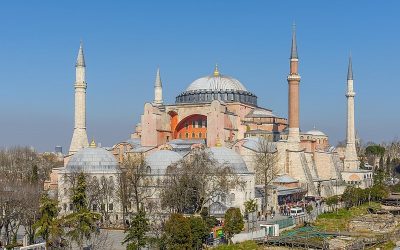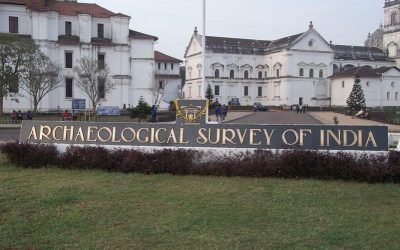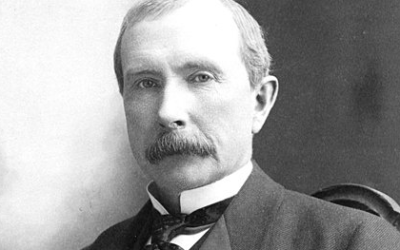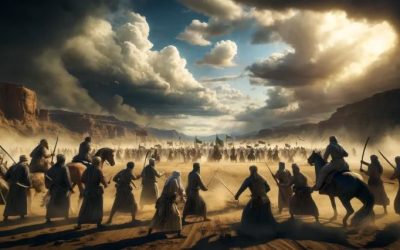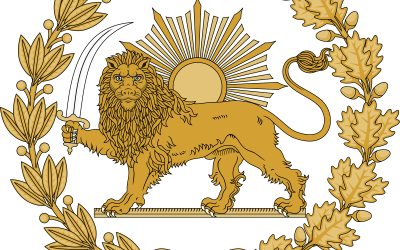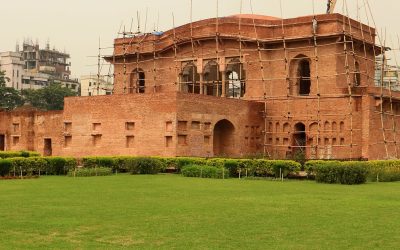Irfan Amin Patwary,
Jahangirnagar University, Bangladesh
According to history, Nalanda University was established in the late fourth century or early fifth century, which was the oldest university in the world and the first residential university after Taxila. Nalanda University was established by the Gupta dynasty and the first ChandraguptaorSamudragupta of the Gupta dynasty is believed to have founded the university.
Nalanda University was located at Rajgir in the present Bihar state of India. Nalanda was originally the name of a village and one of the many naming ideas is that Nalanda University was named after Nalanda village.
In the middle period, Nalanda University was run by Buddhist emperors and in the later period by the Pala kings. It is known that the entire complex of Nalanda University was protected by wide and high red brick walls. The entire university campus was spread over an area of 15 square kilometers and only fifteen percent of it has been excavated and the rest of the ruins are still underground.
The glorious history of Nalanda University
Take a look at the time of establishment of Nalanda University. Around 420-30 AD, when there was no formal education in the whole world beyond religious education or family education, Nalanda University was a well-established educational institution with about ten thousand students and 2000 teachers. The most talked about and impressive building of Nalanda University was its library. The library itself used to be a huge complex for thousands of sacred and rare scriptures. A library building was nine stories high. At that time, the university taught the subjects of rhetoric, medicine, philosophy, theology, Buddhism, astronomy, mathematics, physiology, music, and painting.
The major universities of the Western world began to be established many years later. Al Azhar University in Cairo was founded in 972 AD, five hundred and fifty years after the founding of Nalanda. Then the University of Bologna in Italy was founded in 1088 AD and the University of Oxford in the United Kingdom was founded in 1096 AD, which began to function fully in 1167 AD. The famous Cambridge University was established in 1209 AD and the first university in America, Harvard University, was founded in 1636 AD.
According to the Chinese traveler Hiuen Tsang, education at Nalanda was completely free. Accommodation, food, and treatment were all free. The main expenses were borne by the ruler of the country. People also volunteered to donate food, clothing, etc. for monks and students. Mainly postgraduate level education was imparted here. The admission process was very competitive as many local and foreign students dreamed of studying in Nalanda.
Radha Kumud Mukherjee wrote about Hiuen Tsang in his book (Ancient Indian Education), “Foreign students came to the establishment to put an end to their doubts and then became celebrated.”
Education at Nalanda was highly auditory and aimed at broadening the students’ world of thought. The material acquisition was not the purpose of this education, but the main purpose of education was “knowledge for knowledge’s sake”. There was a lot of discussion, the study was conducted under the shelter of arguments.
Hiuen Tsang also wrote (by Mukherjee), “There eminent and accomplished men assemble in crowds, discuss possible and impossible doctrines, and after having been assured of the excellence of their opinions by wise men, become far-famed for their wisdom.”
Now think, how advanced India was at that time, how advanced our Bengal region was. Bihar, India, where the Nalanda University was established, was not far away from our Bengal region but closely connected with us. Would it have been said, “What Bengal thinks today, India will think tomorrow and the rest of the world will think the day after tomorrow” – although the origin of this word is much later than the nineteenth century?
Historian Niharranjan Roy in his famous book “Bengali Itihash (Adi Parva)” wrote, “The Nalanda Mahavihara had a close association with the science and education of Bengal in the sixth-seventh centuries and the attempts made by Bengali students, acharyas, dynasties to promote the Nalanda Mahavihara is worth noting.” not Mahacharya Visrutkirti Shilabhadra of this Mahavihara was one of the sons of the Brahmin dynasty of Samatata and was Hiuen Tsang’s teacher.”
In the same book, historian Niharranjan Roy also noted, “The Vikramshila Mahavihara was established by Pala king Dharmapala himself and most of the students and acharyas of this period at Odantapuri and Nalanda were Bengalis.” Only this Shilabhadra of Nalanda University was well-versed in all scriptures and sutras. This Buddhist monk and philosopher was born in 529 AD and was best known as the teacher of Hiuen Tsang. His teacher was Dharmapala (not King Dharmapala).
According to Hiuen Tsang’s narrative, after Shilabhadra defeated a Brahmin in South India in a religious dispute at the age of 30, the local king offered him the revenue of a city as a reward, which he did not accept. Later he established a monastery (Vihara) there called Shilabhadra Vihar and it was run with the revenue of that city. Later he moved to Nalanda and after the death of his teacher Dharmapala, he was appointed Acharya of Nalanda Mahavihara and taught there till the end of his life.
Rabindranath Tagore also mentioned Shilabhadra in his writings. “He was a king of a place in Bengal, left the kingdom, and came out. Among all those who were teaching at the same time, he alone could explain all the scriptures and sutras,” Rabindranath mentions this in one of his educational books. Talking about Shilabhadra, Rabindranath also says, “At that time there were Sanghas (Teachers Guild) in various places in Buddhist India. In those Sanghas – saints, scholars, theoreticians, and students used to gather and spread the light of knowledge. Nalanda and Vikramshila Mahavihara are their world form, their natural consequence.”
The quality of a university is largely determined by the quality of students it produces and the impact it leaves on later in life. Now let’s see who else has studied and taught at Nalanda University apart from the famous Mahacharya Shilabhadra.
Dharmapala: According to Hiuen Tsang’s narrative, Dharmapala was born in 490 AD in Kanchipuram, Tamil Nadu, India. He was the son of a high official and was betrothed to the king’s daughter, but eloped on the eve of the wedding feast. He came to Nalanda and studied as a student of Acharya Dignag. He was a scholar of Yoga Shastra and later succeeded to the spiritual post of the university and spent the last years of his life near the Bodhi tree and passed away there. Dharmapala (not King Dharmapala) developed a theory that is, external things do not exist and only consciousness exists.
Aryabhatta: Aryabhatta was born in 476 AD in Patna in present-day Bihar, India, and was one of the first mathematician-astronomers of the classical era of Indian mathematics and astronomy. He once served as the Mahacharya of Nalanda University. He is the author of the famous ‘Arya-Siddhanta’. Above all, his greatest contribution was his discovery of the use of zero (0), a groundbreaking discovery and epoch-making contribution to world mathematics.
Although many of us are not aware of this achievement of the ancient Indian mathematician Aryabhatta, the Western world is well aware of it. One of the biggest reasons for our not knowing this is the colonial hangover, because of which we, especially those educated in modern education, think that Bengalis and Indians were always uneducated and the British came and gave us the opportunity to be educated. We also think that before the arrival of the British, we had nothing to say about the education system in India at that time.
Atish Dipankar: Atish Dipankar, a man of wisdom from Vikrampur (Present day Munshiganj, Bangladesh), Bengal, born around 980 AD, was a graduate student of Nalanda University. He was admitted to Nalanda at the age of 12 and was accepted and taught by Acharya Bodhibhadra. After completing his education, his name was Dipankar Sreegyan. At the age of 18, he attained mastery of Sarvashastra (all fields of education) from Nalanda.
The profound knowledge of Nalanda’s teachers attracted scholars from as far afield as China, Korea, Japan, Tibet, Mongolia, Turkey, Sri Lanka, and Southeast Asia. These scholars have left their signatures on the unique university environment, architecture, and learning. The most detailed narrative comes from Chinese scholars, and the most notable person is Hiuen Tsang, whose narrative contains the most information about Nalanda. In ancient India, only Brahmin children had the right to receive education in ashram-based education. That obstacle was overcome in the Buddhist monastery-centered education system. What was great about Nalanda University was its universality.
Historian Radha Kumud Mukherjee also wrote in his book Ancient Indian Education, “The monks at Nalanda were not a homogeneous community. They were drawn from different denominations of the Buddhist Church and carried into the University all the strife and discord of its different sects and schisms”.
How famous Nalanda University was in the outside world is also evidenced in various ways. Historian Radha Kumud Mukherjee also wrote in his book Ancient Indian Education, “The success of Nalanda as the seat of learning is singularly demonstrated by the demand of foreign countries for the services of its trained scholars in introducing to them the saving knowledge and wisdom of India, which they were so keenly seeking”.
History of the Destruction of the University
The glorious Nalanda University, which spread the light of knowledge for a period of nearly seven centuries, ceased to exist in the late twelfth century when the world-renowned universities of the Western world were just beginning to be established. With the destruction of Nalanda University, the origin and spread of knowledge also shifted from East to West. Now we think the same – all our education system has come from the West – as if we had nothing as if we had taught the West nothing.
Who, and how destroyed Nalanda University? First, let’s see what Encyclopaedia Britannica says.
Encyclopaedia Britannica wrote, “Nalanda continued to flourish as a center of learning under the Pala dynasty (8th–12th centuries), and it became a center of religious sculpture in stone and bronze. Nalanda was probably sacked during Muslim raids in Bihar (1200 CE probably) and never recovered”.
To understand the matter more clearly, let’s resort to a little history. Will Durant, the author of the famous historical book “Story of Civilization”, wrote in the first volume of his book “Our Oriental Heritage (P. 558)”, “The Mohammedans destroyed nearly all the monasteries, Buddhist or Hindu, in northern India. Nalanda was burned to the ground in 1197 and all its monks were slaughtered; we can never estimate the abundant life of ancient India from what these fanatics spared”.
Persian historian Minhaj-i Siraj wrote in his book (Tabaqat-i-Nasiri), “With its high wall, its large buildings, Nalanda seemed like a well-endowed fortress to Ikhtiyar-ud-din and his force. He advanced upon it with two hundred horsemen and suddenly attacked the place”. The greater number of inhabitants of that place were Brahmans, and the whole of those Brahmans had their heads shaved, and they were all slain. There were a great number of books there; and when all these books came under the observation of the Muslims, they summoned a number of Hindus that they might give them information respecting the import of those books; but the whole of the Hindus had been killed. On being acquainted (with the contents of the books), it was found that the whole of that fortress and city was a college, and in the Hindu tongue, they called it a college, Bihar [vihara].”
He also wrote, “When that victory was effected, Muhammad-i-Bakhtiyar returned with great booty, and came to the presence of the beneficent sultan, Qutb-ud-din I-bak, and received great honor and distinction”.
Those who think that Bengalis and Indians were always uneducated, and the British came and gave us an opportunity to become educated, this information can be useful for them. For those who think that there was nothing to say about the education system in India before the arrival of the British, this information can give them an opportunity to think. In the history of the world, Bengalis were the first to build an international standard university.
Who knows, if Nalanda University and some other ancient Indian universities had not been destroyed and their educational system improved day by day, the Indian subcontinent might have been leading the world today in knowledge and science. Or even if they could not lead, they could be both givers and receivers of the Western education system.
Personal opinion of the Author – While many famous historians, following the current of history and being evil in history, directly blame (Ikhtiyar Uddin Muhammad) for the destruction of such a world-renowned educational institution like Nalanda University, there is considerable doubt as to who actually destroyed Nalanda University. An educated ruler would certainly not be responsible for the destruction of a reputed and famous educational institution or would not play a vital role in the destruction of such an educational institution directly or indirectly. It is very important for historians to do enough extensive research on this matter to reveal the truth of history, it can be said that it is the demand of the time. Because it is our responsibility to acquaint the future generation with the true history, if we fail to fulfill this responsibility, then the future generation will not know the true history properly.



